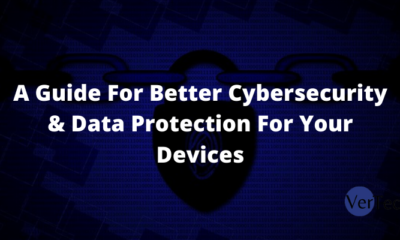eCommerce
Top Strategies for Boosting E-commerce Success

Introduction
In today’s digital age, e-commerce has become a cornerstone of modern business. With an ever-expanding online marketplace and an increasing number of consumers opting for the convenience of shopping from their devices, e-commerce success has become a priority for businesses of all sizes. However, standing out in the competitive e-commerce landscape requires strategic planning and execution. In this blog, we’ll explore the top 12 strategies for boosting e-commerce success and gaining a competitive edge.
- Create an Outstanding User Experience
The foundation of any successful e-commerce venture lies in delivering an outstanding user experience (UX). A well-designed and user-friendly website can significantly impact customer satisfaction and conversion rates. Ensure your website is visually appealing, easy to navigate, and responsive across all devices. Streamline the checkout process, minimize loading times, and provide clear product descriptions and high-quality images. Personalization is another essential aspect of UX – use data-driven insights to offer personalized product recommendations and tailor content based on customer behavior.
- Optimize for Mobile
The rise of mobile devices has transformed the way people shop online. Mobile optimization is no longer optional; it’s a necessity. Ensure that your e-commerce website is fully responsive and mobile-friendly. Pages should load quickly, and the user interface should be easy to interact with on smaller screens. Mobile shopping apps can also effectively engage with customers and provide a seamless shopping experience. You can also use stock photos to create attractive banners and ads that appeal to a mobile audience.
- Leverage Social Media
Social media platforms are powerful tools for reaching and engaging your target audience. Establish a strong presence on platforms like Facebook, Instagram, Twitter, and Pinterest. Use these channels to showcase your products, run targeted advertising campaigns, and interact with customers through comments and direct messages. Influencer marketing can also be an effective way to expand your reach and tap into new markets.
- Implement SEO Strategies
Search Engine Optimization (SEO) is crucial in driving organic traffic to your e-commerce website. Conduct thorough keyword research to identify relevant search terms and incorporate them strategically into your product pages and content. Optimize meta tags, URLs, and product descriptions to improve your search engine rankings. Regularly update your website with fresh and valuable content to maintain visibility in search results.
- Offer Multiple Payment Options and Secure Checkout
A key factor influencing e-commerce businesses’ success is the ease of making payments. Offer secure payment options, including credit cards, digital wallets, and online banking. Ensure that your website has SSL encryption to protect customer data during checkout.
- Provide Excellent Customer Support
Exceptional customer support can make a significant difference in building customer loyalty and driving repeat business. Offer multiple channels for customer support, such as live chat, email, and phone support. Respond promptly to customer inquiries and complaints, and strive to resolve issues effectively. Implement a user-friendly return and refund policy to instill confidence in customers’ purchasing decisions.
- Utilize Email Marketing
Email marketing remains one of the most effective tools for e-commerce businesses to engage with their audience. Build and segment your email list to send targeted and personalized messages. Use email campaigns to promote new products, offer exclusive deals, and re-engage with past customers. Automated email sequences, such as cart abandonment reminders and post-purchase follow-ups, can also help improve conversion rates.
- Implement Customer Loyalty Programs
Retaining existing customers is often more cost-effective than acquiring new ones. Implement a customer loyalty program to reward repeat purchases and referrals. Offer incentives such as discounts, free shipping, or access to exclusive products. A well-designed loyalty program can foster a sense of belonging and incentivize customers to choose your brand over competitors.
- Embrace Data Analytics
Data is a goldmine of insights that can drive e-commerce success. Implement robust analytics tools to track user behavior, website performance, and marketing campaigns. Analyze the data to identify trends, strengths, and weaknesses. Use this information to make data-driven decisions, refine your strategies, and optimize the customer journey.
- Continuously Improve and Innovate
The e-commerce landscape is constantly evolving, and successful businesses must be willing to adapt and innovate. Stay abreast of industry trends, emerging technologies, and customer preferences. Solicit customer feedback and use it to improve your products and services continually. Embrace experimentation and be open to trying new marketing techniques and sales channels.
- Utilize Cross-Selling and Upselling
Cross-selling and upselling are powerful techniques for increasing the average order value and maximizing revenue per customer. Cross-selling involves suggesting related or complementary products to customers based on their current purchase. For example, if a customer is buying a camera, you can offer camera accessories like lenses, memory cards, or camera bags. Upselling, involves encouraging customers to upgrade to a higher-priced version of the product they are interested in. Implementing these strategies requires a good understanding of customer preferences and behavior, which can be supported by data analytics. By intelligently incorporating cross-selling and upselling techniques into your e-commerce platform, you can enhance customer satisfaction while boosting your sales and profits.
- Invest in Influencer Collaborations and User-Generated Content
Influencer marketing has become a major driving force in e-commerce success. Partnering with influencers in your niche can help you reach a wider audience and build trust with potential customers. Look for influencers whose values align with your brand and whose followers match your target audience. Collaborate with them to create authentic, engaging content showcasing your products or services. Additionally, user-generated content (UGC) is valuable in e-commerce marketing. Encourage your customers to share their experiences with your products by posting reviews, photos, and videos. UGC adds social proof and credibility to your brand, influencing the purchasing decisions of potential customers. You can significantly enhance your brand’s visibility and credibility by harnessing the power of influencer collaborations and user-generated content.
Summary
E-commerce success hinges on delivering an exceptional user experience, optimizing for mobile, leveraging social media, and implementing SEO and digital marketing strategies. Additionally, prioritizing security during the checkout, engaging content showcasing, providing excellent customer support, and utilizing email marketing and customer loyalty programs are crucial for sustainable growth. Embracing data analytics and maintaining a commitment to continuous improvement and innovation will help e-commerce businesses thrive in a competitive market. By following these top 12 strategies, you can position your e-commerce venture for success and create a loyal customer base that drives growth and profitability.
-
Blog1 year ago
MyCSULB: Login to CSULB Student and Employee Portal – MyCSULB 2023
-
Android App3 years ago
Cqatest App What is It
-
Android1 year ago
What Is content://com.android.browser.home/ All About in 2023? Set Up content com android browser home
-
Software2 years ago
A Guide For Better Cybersecurity & Data Protection For Your Devices
-
Latest News2 years ago
Soap2day Similar Sites And Alternatives To Watch Free Movies
-
Android2 years ago
What is OMACP And How To Remove It? Easy Guide OMACP 2022
-
Android3 years ago
What is org.codeaurora.snapcam?
-
Business2 years ago
Know Your Business (KYB) Process – Critical Component For Partnerships





















